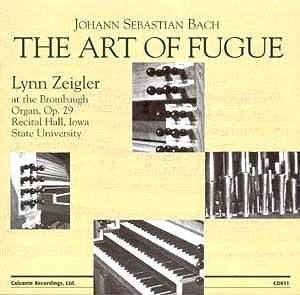 Composer: Johann Sebastian Bach
Composer: Johann Sebastian Bach
Works: Te Deum BWV 725, Liebster Jesu, Wir Sind Hier BWV 731, Fantasia sopra: Christ lag in Todesbanden manualiter BWV 695, Wer nur den lieben Gott lässt walten manualiter BWV 690, Nun freut euch, lieben Christen G’mein BWV 734, Vater unser in Himmelreich BWV 737, Valet will ich dir geben, choralis in pedale BWV 736, Fuga sopra: Durch Adams Fall ist ganz verderbt BWV 705, Fantasia sopra: Jesu, meine Freude BWV 713, Wir glauben all an einen Gott BWV 765, Herr Christ, der einig Gottes BWV Anh 55, Aus tiefer Not schrei’ ich zu dir BWV 686
Performers: André Isoir, organ; Ensemble Metamorphoses; Ensemble Coeli; Ensemble Terra
Recording: Rec: 2000, Eglise Saint-Thomas d’Aquin, Paris
Label: Calliope 9722
Bach’s Te Deum, with its Lutheran roots and profound liturgical significance, stands as a testament to the composer’s ability to weave deep spirituality into intricate musical forms. Historically, the Te Deum is a hymn of praise with origins in the early Christian Church, and Bach’s adaptation, notably through his chorale “Herr Gott, dich loben wir,” BWV 725, presents a fascinating intersection of sacred and musical traditions. This recording, featuring André Isoir and various vocal ensembles, seeks to explore and illuminate the relationship between organ chorales and vocal works, creating a unique soundscape that provokes both thought and reflection.
Isoir’s interpretation is a compelling blend of the established and the innovative. The first track, “Herr Gott, dich loben wir,” invites the listener into a rich tapestry of sound, where the organ’s textures are beautifully complemented by the superimposed choral voices. This technique, while speculative, allows for a dialogue between the instrumental and vocal lines, creating a meditative atmosphere that feels both reverent and intimate. The choice to alternate between solo organ pieces and choral settings echoes Bach’s own compositional practices, especially evident in his cantatas, where such contrasts highlight thematic developments and emotional depth.
The technical execution of the organ parts is noteworthy, with Isoir favoring a restrained registration that emphasizes melodic clarity over sheer volume. This decision is particularly effective in “Nun freut euch, lieben Christen g’mein,” where the intricate arabesques in the upper register of the organ create a buoyant, celebratory mood. The vocal sections, while occasionally lacking thematic coherence with their instrumental counterparts, nonetheless offer delightful harmonic interplay, reminiscent of motet-style writing. Isoir’s interpretation shines in tracks like “Wir glauben all an einen Gott,” BWV 765, where the interplay of voices and organ culminates in a rich, resonant blend, showcasing both the textural and harmonic capabilities of Bach’s music.
Sound quality and engineering play a crucial role in the success of this recording. The acoustic of Eglise Saint-Thomas d’Aquin enhances the clarity of the organ while enveloping the choral sounds in a warm, resonant space. Each note is articulated with precision, allowing the listener to appreciate the subtle nuances of Isoir’s playing and the vocal ensembles’ balance. This recording does not merely present a collection of Bach’s works but instead reimagines them, offering a fresh perspective on familiar themes and melodies.
The result is an album that, while it creatively “creates” new Bach works from existing materials, does so with a sense of authenticity and reverence for the original compositions. Isoir’s artistry and the ensembles’ performances converge to produce a spiritually uplifting experience, making this recording a worthy addition to any collection dedicated to Bach’s sacred music. The thoughtful interplay of organ and voice, combined with the high-quality production, ensures that this recording resonates with both the intellect and the spirit, ultimately reaffirming Bach’s enduring legacy as one of the great masters of liturgical music.



